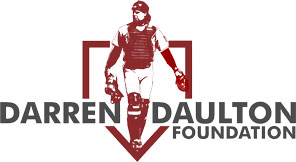Understanding Brain Cancer Chemotherapy
When facing a diagnosis of brain cancer, understanding the different treatment options is crucial. One common and important treatment is brain cancer chemotherapy.
This article will focus solely on chemotherapy for brain tumors, explaining what it is, how it works, the drugs used to treat brain cancer, potential side effects of chemotherapy, and other important aspects in simple, easy-to-understand language.
What is Chemotherapy for Brain Cancer?
Chemotherapy is a treatment that uses powerful drugs used to treat brain cancer to destroy cancer cells throughout the body. These drugs work by targeting rapidly dividing cells, which is a characteristic of cancer cells. While chemotherapy is often associated with cancers that spread throughout the body, it also plays a significant role in treating certain types of brain tumors.
For brain cancer, chemotherapy can be used in different ways:
- As the main treatment: For some types of brain tumour that are widespread or cannot be completely removed by surgery, chemotherapy might be the primary treatment.
- After surgery: Chemotherapy can be given after surgery to kill any remaining tumor cells that might not have been removed.
- Alongside radiation therapy: In some cases, chemotherapy is given at the same time as radiation therapy to make the radiation more effective. This is called chemoradiation.
- To treat recurrent cancer: If brain cancer returns after initial treatment, chemotherapy might be used to control its growth.
How Chemotherapy Works in the Brain
One of the unique challenges in treating brain cancer with chemotherapy is the blood brain barrier (BBB). This is a natural protective barrier that surrounds the central nervous system (which includes the brain and spinal cord). The BBB restricts many substances, including some chemotherapy drugs used to treat brain cancer, from easily entering the brain from the bloodstream.
However, scientists have developed chemotherapy drugs that can cross the blood brain barrier to some extent. Additionally, for certain situations, chemotherapy can be delivered directly into the cerebrospinal fluid (CSF), the fluid that surrounds the brain and spinal cord. This method, called intrathecal chemotherapy, bypasses the blood brain barrier and allows the drugs to reach the tumor cells more directly.
Types of Chemotherapy Drugs for Brain Tumors
The specific drugs used to treat brain cancer will depend on several factors, including the type of cancer, the location and size of the tumor, and the patient’s overall health. Some of the commonly used chemotherapy drugs for types of brain tumour include:
- Alkylating agents: These drugs, such as temozolomide (Temodar) and carmustine (BCNU), damage the DNA of cancer cells, preventing them from multiplying. Temozolomide is often used for glioblastoma, a common and aggressive type of brain tumour, and can be given orally. Carmustine can be given intravenously or as a wafer implanted directly into the brain after surgery.
- Platinum-based drugs: Cisplatin and carboplatin are examples of these drugs that also damage cancer cell DNA. They are sometimes used for certain types of brain tumors.
- Vinca alkaloids: Vincristine is an example of this class of drugs that interfere with cell division. It is one of the drugs in the PCV (procarbazine, lomustine, and vincristine) regimen.
- Nitrosoureas: Lomustine (CCNU) is another drug that can cross the blood brain barrier and is often used for various types of brain tumors. It is also part of the PCV procarbazine lomustine and vincristine regimen.
- Antimetabolites: These drugs interfere with the building blocks of DNA and RNA, preventing cancer cells from growing. Examples include methotrexate, which can be given intravenously or intrathecally.
Often, a combination of different chemotherapy drugs may be used to treat brain cancer. For instance, the PCV procarbazine lomustine and vincristine regimen is a well-known combination used for certain types of gliomas. The choice of drugs and the treatment schedule will be carefully determined by the oncologist based on the specific situation.
How Chemotherapy is Given
Chemotherapy for brain tumours can be administered in several ways:
- Orally (by mouth): Some chemotherapy drugs, like temozolomide, come in pill or capsule form that can be taken at home.
- Intravenously (through a vein): Most chemotherapy drugs are given through an IV line inserted into a vein. This is usually done in a hospital or clinic setting.
- Intrathecally (into the cerebrospinal fluid): For cancers that have spread to the CSF or to target areas near the brain and spinal cord, chemotherapy can be injected directly into the CSF through a lumbar puncture (spinal tap) or through a surgically implanted device called an Ommaya reservoir.
- As wafers (implanted in the brain): Carmustine wafers can be placed directly into the cavity created after brain tumor surgery. These wafers slowly release the chemotherapy drug directly at the tumor site.
The frequency and duration of chemotherapy treatment vary greatly depending on the type of tumor, the specific drugs used, and how the body responds to the treatment. Treatment is typically given in cycles, with periods of treatment followed by rest periods to allow the body to recover.
Common Side Effects of Chemotherapy
Chemotherapy drugs target rapidly dividing cells, but they can also affect other fast-growing cells in the body, such as blood cells, hair follicles, and cells lining the digestive tract. This can lead to various common side effects. It’s important to remember that the side effects of chemotherapy can vary significantly from person to person, and the effects depend on the type of drug, the dose, and the duration of treatment.
Some of the common side effects of chemotherapy for brain cancer include:
- Fatigue: Feeling very tired is a common side effect.
- Nausea and vomiting: Medications can often help manage these symptoms.
- Hair loss (alopecia): Not all chemotherapy drugs cause significant hair loss, but it is a possibility.
- Mouth sores (mucositis): Chemotherapy can irritate the lining of the mouth.
- Changes in appetite and taste: Food may taste different, and you might not feel as hungry.
- Diarrhea or constipation: Chemotherapy can affect the digestive system.
- Increased risk of infection: Chemotherapy can lower the number of white blood cells, which fight infection.
- Easy bruising and bleeding: Chemotherapy can affect platelets, which help with blood clotting.
- Anemia: A decrease in red blood cells can lead to fatigue and weakness.
- Cognitive changes (“chemo brain”): Some people experience problems with memory, concentration, and focus during or after chemotherapy.
It’s crucial to discuss potential side effects of chemotherapy with your medical team before starting treatment. They can provide strategies to manage these side effects and help improve your quality of life during treatment. Many side effects are temporary and will improve after chemotherapy is completed.
The Role of Chemotherapy in Brain Cancer Treatment
Chemotherapy is a vital part of the treatment plan for many individuals with brain cancer. While the blood brain barrier presents a unique challenge, advancements in chemotherapy drugs and delivery methods have made it a valuable tool in fighting tumor cells. The effectiveness of chemotherapy depending on the type of brain tissue affected and the specific characteristics of the cancer.
Your oncologist will carefully consider all factors when determining if chemotherapy is the right treatment option for you and which drugs used to treat brain cancer will be most effective. They will also closely monitor you during treatment to manage any side effects of chemotherapy and adjust the treatment plan as needed.
Understanding brain cancer chemotherapy is an important step in navigating a brain tumor diagnosis. While it presents unique challenges due to the blood brain barrier, chemotherapy remains a crucial treatment for many types of brain tumours, working to destroy cancer cells and control the disease.
By understanding the drugs used to treat brain cancer, the potential side effects of chemotherapy, and how it is administered, patients and their families can feel more informed and prepared throughout their treatment journey.
Remember to always discuss any questions or concerns you have with your medical team.
Support the Darren Daulton Foundation:
Learn how you can make a difference by visiting our Donate page.
If you’d like to contribute your time and skills, please visit our Volunteer page.
For those in need of financial assistance during their cancer journey, you can find more information on our Financial Assistance page.



